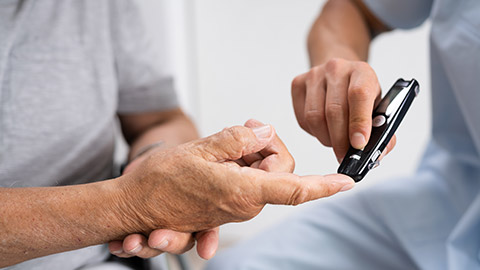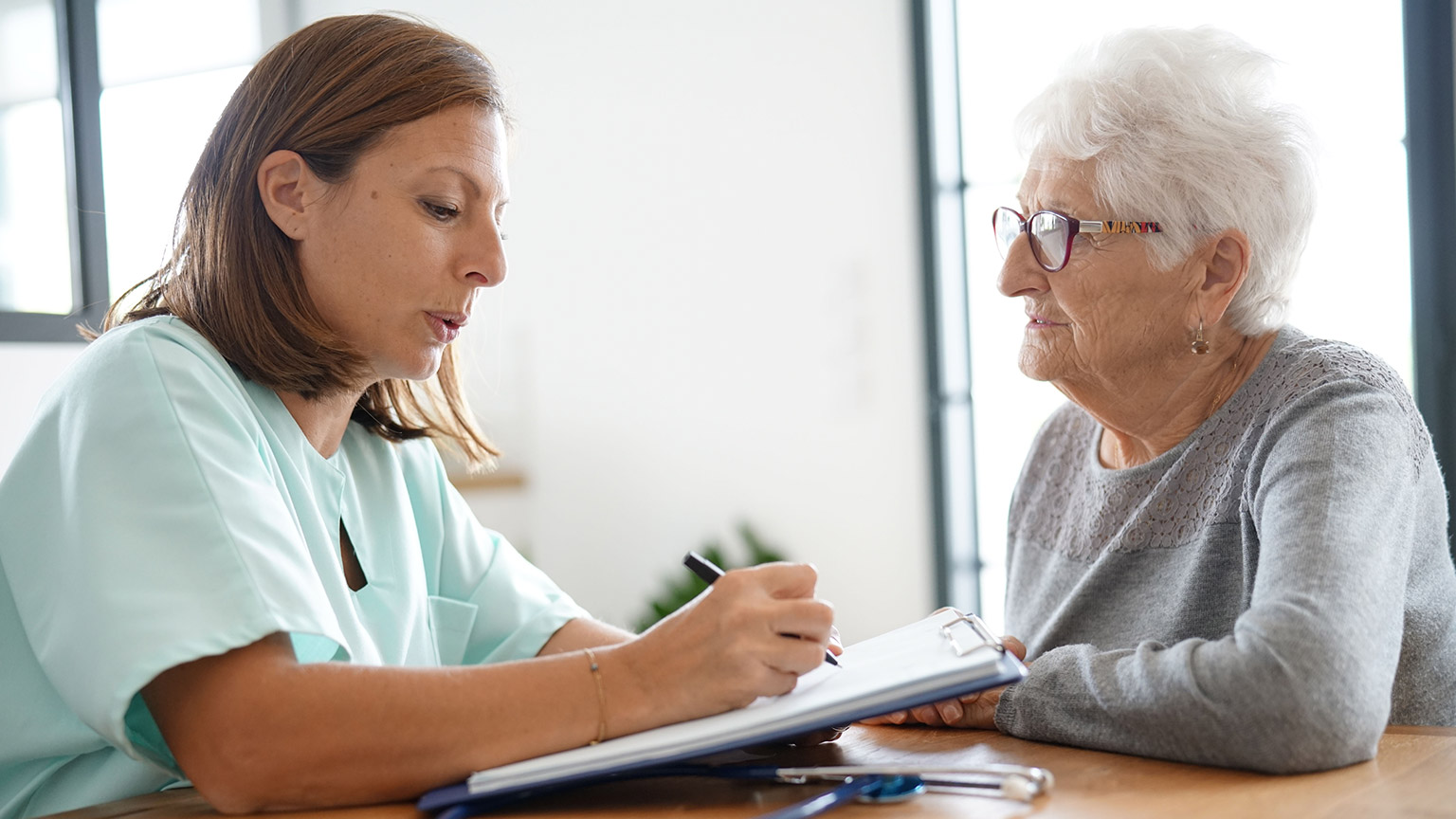As a support worker, observation is a crucial part of your job to monitor any changes or progression in older adults’ conditions. This ensures that any symptoms indicating new and serious health conditions or deterioration in current health conditions are recognised, reported and attended to. This part of the module will outline what observation is, why it is important in a care home setting, and when to observe and how to document observations.
Observation is using your senses – sight, hearing, smell, and touch – along with what you know about older adults to keep a watchful eye on their health and well-being. In a care home, we split this watchful eye into two categories: objective and subjective.
So, whether it's the power of measuring facts or listening to people's feelings, these observations are our secret weapons in giving the best care to our elderly residents.
Activity - Drag and Drop
Support workers spend the most time with residents, often making them the first to notice any changes. Their observation skills are vital because they help:
- Set a baseline to know what's normal for each resident.
- Spot consistent behaviour patterns.
- Create precise treatment plans.
- Detect any health condition changes or behaviour shifts.
- Report new symptoms or deteriorating health.
- Preserve residents' independence, privacy, and dignity.
- Deliver tailored care.
These skills ensure residents receive the best care and prompt attention to issues.

Observation is an ongoing process, crucial for maintaining up-to-date health records. To understand changes in an older adult's physical and mental state, practitioners begin with a baseline observation.
This baseline involves tracking common vital signs and health conditions. Select the labels or (+) signs below to learn more about each.
Breathing reveals much about one's health. It can be influenced by various factors like asthma, anxiety, or medication. The frequency of checking depends on health conditions, especially for those with lung issues or physical disabilities.
Baseline observations help identify the resident's normal breathing pattern, recorded clearly on their chart for future comparisons.
The heart pumps blood through arteries, creating a pulse. Pulse rate, strength, and rhythm offer insights into health. Factors like emotions, physical activity, and smoking can affect it.
The frequency of checking pulse varies based on health conditions. After surgery, regular checks are crucial, as a rapid pulse may signal internal bleeding.
Baseline observations establish the resident's normal pulse pattern, recorded on their chart for comparisons.
The pulse is the sensation of blood flowing through arteries over bone. It reveals information about health, including rate, strength, and rhythm. Emotions, physical activity, and smoking can affect it.
How often to check the pulse depends on health conditions, with frequent checks post-surgery to detect possible internal bleeding.
The baseline observations on an older adult’s blood pressure will identify what their normal blood pressure is. This should be recorded on the resident’s chart, clearly and accurately, and all further observations can be compared against this (though remember this initial reading might be higher than average).
Blood glucose levels are vital for diagnosing and managing diabetes. Regular monitoring ensures levels stay safe. There are various medications and testing routines depending on the severity of the condition, which may range from several times a day to once a month.
Testing blood is the most accurate method. Balancing diet, medication, and physical activity is key.
Baseline observations establish the resident's normal blood glucose levels, recorded on their chart for comparisons (though the initial reading might be higher than average).
Our bodies work hard to maintain an average temperature of 37°C, regulating it through processes like sweating and shivering. Keeping within this range is crucial for bodily functions. Temperature changes can signal health issues, like infection or hypothermia.
For older adults, taking their temperature upon arrival in a care home is essential for future observations. How often you check their temperature depends on their health and any signs of discomfort. Baseline observations determine their normal temperature, recorded on their chart for future comparisons.
Other vital signs or conditions that you will observe include:
- Oxygen levels.
- Peak flow testing.
- Urine testing.
- Body Mass Index (BMI).
- Mental health.
- Loneliness.
Activity - Drag and Drop

The process of observation also involves documenting and recording all observations in order to gain a full picture of the older adults’ physical and mental health. Every workplace will have different policies and procedures for observation and documentation, so ensure you are following their specific rules.
Each resident will have a care plan and chart that will detail their health conditions and what medication they are on and all baseline recordings and further regular observations should always be recorded here as well, including the date and time the observation took place. By compiling an organised timeline with accurate and reliable observations, the healthcare team will be able to easily examine the charts to identify any changes or progression of the client's conditions.
If there are any changes in vital signs or conditions out of the residents’ normal range, you should report these findings to the registered person in charge to make sure your client is attended to.
Reporting
Another communication tool is reporting. Reporting on the progress of tangata/clients is a legal requirement.
Correct reporting ensures:
- continuity of, and proper standard of care
- effective monitoring and review
- validation of service delivery
- identification of risks for tangata/clients and staff
- evidence for potential legal issues.
You will need to give feedback regarding the tangata/clients you are supporting. Your feedback may be:
- Written
- Verbal
You need to make sure that you report in accordance with organisational policies and procedures. They include legislative and regulatory requirements, which may apply across a company, a specific site, or a workplace.
Reporting back to the team
Reporting is all part of working collaboratively so that all members of the interdisciplinary team can work together to achieve the common goal of supporting the person as well as possible. Collaborative practice involves the following:
- sharing information within the team so that the person’s care continues to be relevant and appropriate.
- contributing ideas to overcome barriers.
- making the best use of each team member’s time and resources.
- responding appropriately and quickly to changes in the person’s needs.
Factual reporting
A fact is a piece of information about circumstances that exist or events that have occurred.
You can usually find out the facts you need if you can answer these questions:
- Who is the report about?
- What did I notice about that person?
- When did it happen?
- Where did it happen?
- Why or how did it happen?
Avoid reporting unrelated details, even if they are facts. Also, avoid reporting opinions, such as what you think about what has happened.
Reporting your observations
Objective observations are pieces of information that you gather by using your senses. To describe these observations accurately, you will need to document or report them in detail. Here are some examples:
| Hearing | Refers to how you may listen to changes in a person’s breathing pattern, for example, wheezing. |
| Seeing | Refers to visually observing the person doing more or less for themselves than they could a week ago. |
| Smell | Refers to how you may observe changes through scent. There may be smells that you do not usually associate with that person, for example, a strong smell of alcohol. |
| Touch | Refers to how you may feel that the person’s skin is hot, damp, cold, clammy or has goosebumps. |
Monitoring and recording
Monitoring tangata/clients you are supporting and recording their progress, or lack of progress, is important. It is essential that plans are kept up-to-date, relevant and achievable.
To make sure that you are supporting them in the best way and that the plan is working, it is important to monitor and record what is happening. There may be different forms of recording that you will be expected to do in your workplace. For example, there may be a form to complete to record progress on individual plan goals.
Your organisation will have policies and procedures for recording and monitoring progress. If you are unsure of what your organisation’s policies and procedures are, you should talk to your supervisor.
When writing reports and updating plans, always be aware of role boundaries, and where your role ends and another begins.
Watch: Observation, Reporting & Documentation (12:26)
Watch the video and answer the following questions.
